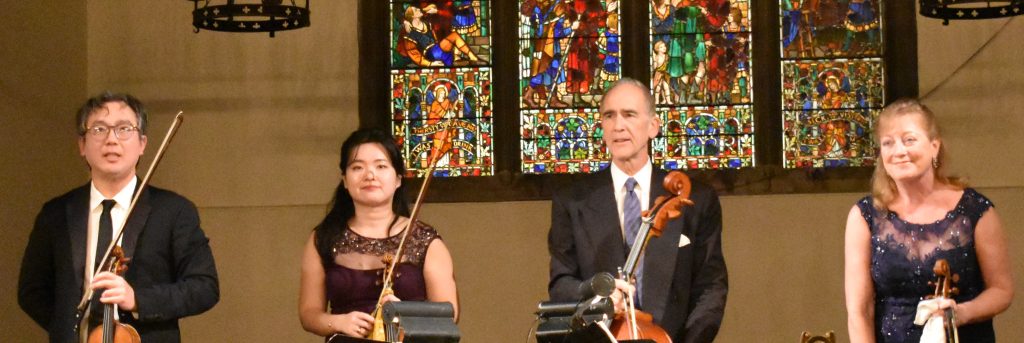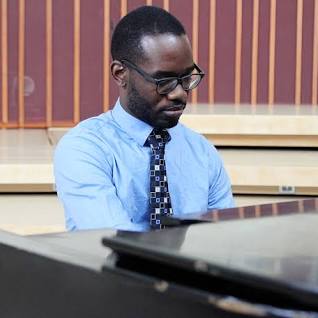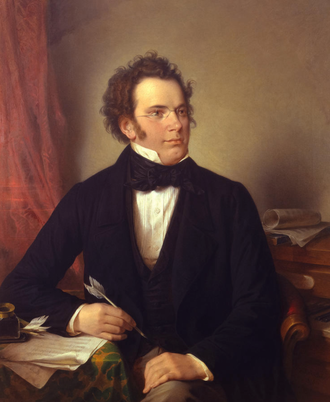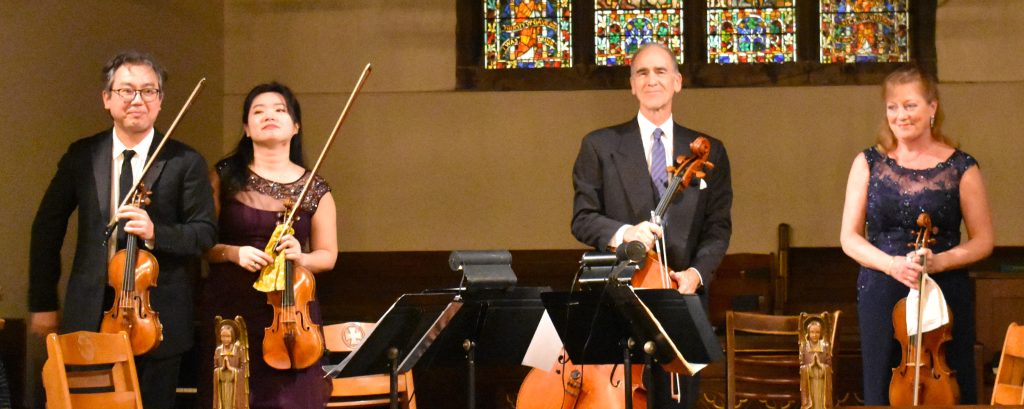
by Kevin T McEneaney
Last Friday night at the newly renovated All-Saints Chapel on campus, The New York Philharmonic Quartet delivered a performance that may have exceeded their reputation. After an introduction by Ned Reade, they opened with String Quartet No. 19 in C Major, K. 465 by Wolfgang Amadeus Mozart, known for its instrumental brilliance.
Nicknamed “Dissonance,” this work opened with cellist Carter Brey suggesting a dissonant motif in the Adagio; violist Cynthia Phelps follows with ambiguous agreement, then second violinist Qianaian Li joins with a more robust line, yet concertmaster Frank Huang on lead violin refrains from joining the party, and when he enters, he suggests a more lightly lyrical ornamentation, which is ignored by the cellist, who is leading the session. What ensues is a conversation, or perhaps lesson, in the role of dissonance.
In the charming Allegro the second violin, superbly played with lyric resonance by Qianaian Li, challenges the cello while the lead violin remains distantly polite, and the viola wishes to get along with everyone. In the third Menuetto dance movement, the lead violin takes vigorous interest with the viola reduced to background support while the other three instruments move toward a trio arrangement. The concluding Allegro features all four players happily agreeing to minimalizing dissonance as they meld into a fierce Haydnesque agreement as the lead violin of Frank Huang achieved astonishing eloquence with full support from the other three performers.
The moral appears to be that dissonance can be an interesting experiment, yet in the end lyrical harmony enjoys the superlative laurel, which is what wowed the attendant audience.

They next played a short but dense contemporary piece, In Response to the Madness, by Atlanta-based composer Joel Thompson (b. 1988). This was a post-modern composition inspired by the murder of George Floyd for passing a phony twenty-dollar bill. Thompson watched the morning news on the subject: the result was both startling and sorrowful as it delineated the situation of racial divide in the United States. The work was thrilling in its combination of dissonance and harmony, which was the obvious ideal. While listening in person at a concert remains the ideal real thing, a recording of the six-minute work is available on You Tube at this link, which I heartily recommend.

After intermission they performed String Quartet No.14 in D Minor, D. 810 by Franz Schubert. This work features the nickname “Death and the Maiden,” a meditation on the much-depicted painterly Medieval theme of early death, a fate that Schubert himself was a victim of (typhoid fever or possibly syphilis), dying at 31 after producing a prodigious output of unmatched German songs and impressive musical masterpieces. Composed during a bout of illness in 1824, the work retains an iconic impact on the brevity of life. This opus also announced the full maturity of Schubert’s inventive style.
The performance was robust, melodic, piercing, and memorable with all four players tightly welded in melded unison with the theme of accepting the inevitable conclusion of life for everyone, and even of humanity itself. The audience erupted for a standing ovation, demanding two long bows.

The next concert at All-Saint’s Chapel with its remarkable acoustics (which the performing quartet approvingly remarked upon) will be The Vivaldi Project, a Baroque and Classical ensemble on December 15th at 8 pm.